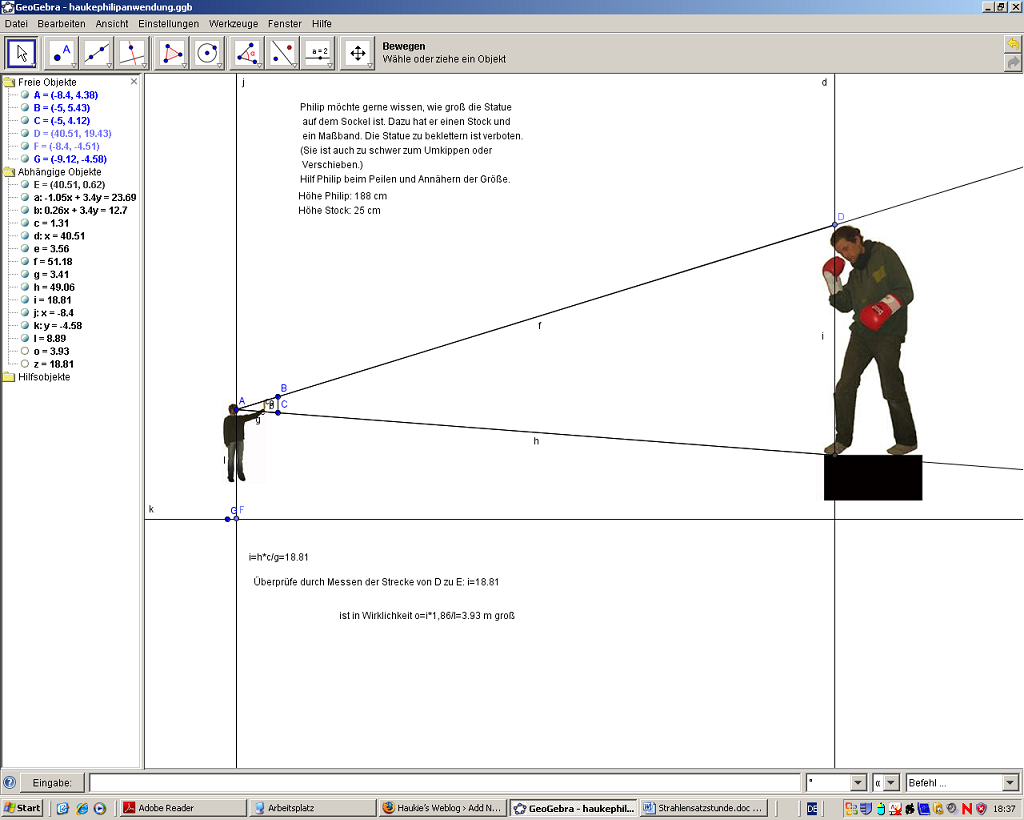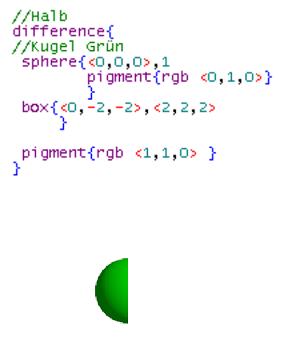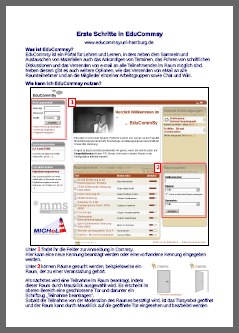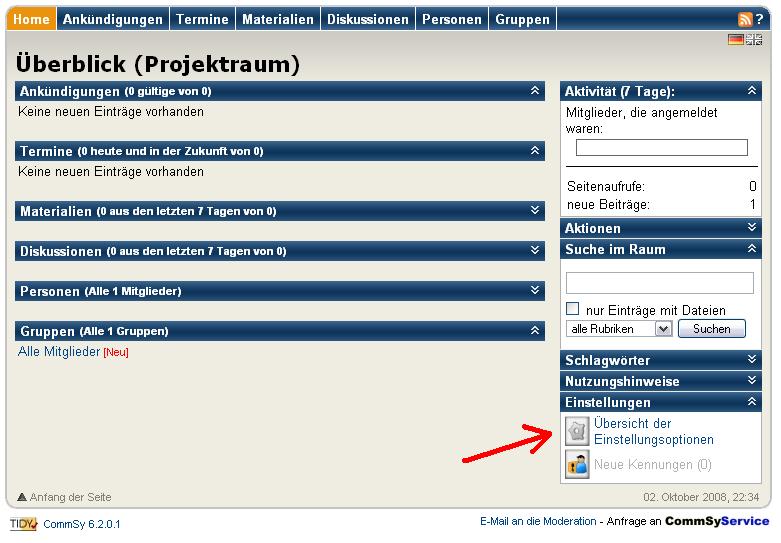Today i was writing while the session took place.
First ralf presented the schedule of today, then we evaluated the online-session of last week.
We listed them on the whiteboard with „activestudio 3 professional“:
+PLUS+
* first: experience
now: development
* it is fun
* nice to decide individual learning setting
* very active learning environment
-MINUS-
* do if from home
* too many platforms
* tips on how to communicate with each other (skype)
* more stucture is needed (text chat)
* log in problems
* disruptive
* easier distraction
Simon had a problem with the webcam and the conntection. Also he criticized the overcrowded communication with all that different platforms and the way of communication: who is writing to whom? We needed tips how to do that. How to communicate, do we need moderation, who is talking when? Is there an option to moderate ? Good at skype is, that you see when somebody is typing, so you can guess, who wants to say something. I mentioned that there are maybe no fixed „rules“ but communication-development of technics over centuries which are maybe „bewährt“. Daniel mentioned a big positive point: We could all participate and stay home. Is the sound working? When you want to work with it, you do not have time for checking the sound. You need a second plan after your masterplan. What would be useful would be a kind of „emergency button“ to have less repeating content and to mention „i am lost“. This could be techical realised similair to this backchannel or handshake. There were technical problems with one person, who was not able to log in. It was frustrating for him, cause he could just hear some few words and the end of the session. Then he was not recognizing when the session was over, but it was a new thing and fun.
People were distracted but also active. The content was missing, so this was the first-time experience which made us distracted from content. But it was good that we could choose our individual learning environment and therefor it was a very active way of learning. The question is if it was learning about the tools or if you want to learn about a content and use it as a method. People tended to get tired when we saw that video of 10 minutes. So for learning facts it is not clear if there are good results and fun, too.
helpful things:
established rules
icons
moderator
1st session technical issues and 2nd content
organisation
have plan b
backchannel / handshake
emergency button
There was a good experience with two teachers, one for the content, one for the technics and a lot of listeners when ralf made it with students from rotterdam.
We talked about „Adobe connect“, which makes it possible to see a session again. This software we used last week for the http://breezesrv.rrz.uni-hamburg.de
There you have camera, screenshot and a text-chat. You can turn on and off more pods (little windows) like filesharing, camera-sharing, notes. You can also change the formats and screen-„Aufteilung“. There was a question wether it is like a walky talky or like a telephone. Everybody can talk and listen the same time.
You have to buy the system but connected to the screening-time it is more or less expensive.
Some examples are at http://e-teaching.org, ralf will tell us later when he figured out where to find a propper example to show us more than we experienced last week.
We saw an example together from: www.connect.lwm-kmrc.de/p35287287/
This is a e-learning session which used the same software like we last week (breezesrv)
presentation of elena, selma and simon working on computer-based training (CBT) and web-based training (WBT)
The presentation is available here (slides) and here (videos, i missed the link).
The group started with a video we watch together about computer-based trainingThere Elena is shown how she uses a sports course from a guiding CD rom. There is a certain structure and sometimes by a virtual teacher. There are fromal aspects and informal aspects. Negative aspects are that you cannot update, cannot discuss or change the setting, it is fixed on the medium.
A slideshow we see consists of definitions, advantages and disadvantages. It becomes obsolete quickly, there is no interaction between users intended. There are few distractions and there are few technical gadgets (small technical devices) needed.
Next videoclip is about web-based training. The example is showing how to use the WBT to train languages. There are also web-based trainings as games available (with tasks in a virtual cartoon surrounding).
Again slideshows about this systems are shown with their advantages and disadvantages. They differ from CBT as well as the range of use. This you can find in detail at the slides.
Now we start an discussion about what kind of system we might use and what we would prefer. Nowadays a lot of phones have webbrowsers as well, so the future is in the web. But it is sometimes much more usefull for long bus trips f.e. There are also companies which give not all employees an internet-access. There could be webbased systems also in the internet.
We can try ourselves at www.bellenglish.com for one example of WBT.
Evaluation: Group work coordination and communication was working sometimes not that well. The technical points create gaps. There was a question about publishing and copyrights. If you put content to the web you should think about it but for educational matters it is not that big point. There is a report about problems at e-bay with that kind of copyright,
Now we are going to rush through the last points of the schedule.
There is a new Task #8 available. This is more about theory and putting the practise back into the connection to learning.
We should fill the links at the wiki: learning theory page. The idea is to work collaboratively on the wiki. I liked that point with the references there. So we are going to research and fill gaps step by step. Then ralf presented the schedule of the next weeks. There will be still 3 sessions where we meet and after the conclusion we will have some single conclusions about each others work.
The open points for the session in two weeks which is still not filled
ideas for the schedule in two weeks are:
1. clean up (pfd summarizing the seminar in a way)
2. e- moderation
3. technical stuff like how to use the beamer
4. connection of „important people“ and reliable sources about e-learning
5. overview of software, platforms, etc.
ralf likes that we do not use our blog only for this seminar, but as a traveling diary or just professional blog,…
If there is a need for more reflections, we can use the „semesterferien“ 😉


 Nach einer Einführung in die Funktionalitäten der Software und ersten Übungen habe ich die Erstellung komplexer Objekte in POV Ray (siehe Bild) und die Verwendung von Kontrollstrukturen in POV-Ray erläutet sowie die Verwendung von Dateiverwaltung und Variablen. Zum Ende der Sitzung haben wir eine kleine Animation mit den Seminarteilnehmer_innen in einer Übung selbst erstellt.
Nach einer Einführung in die Funktionalitäten der Software und ersten Übungen habe ich die Erstellung komplexer Objekte in POV Ray (siehe Bild) und die Verwendung von Kontrollstrukturen in POV-Ray erläutet sowie die Verwendung von Dateiverwaltung und Variablen. Zum Ende der Sitzung haben wir eine kleine Animation mit den Seminarteilnehmer_innen in einer Übung selbst erstellt.

